What Is optical device Etching?
What Is optical device
Etching?
Laser etching may be a method that makes
marks on elements and product by melting their surface. it's a part of the
broader class referred to as optical device marking that additionally includes
optical device engraving and optical device tempering. extremely versatile, it
will be used with most metals.
To produce a raised mark, the shaft
delivers a high quantity of energy to atiny low space. As a result, the surface
of the fabric melts and expands. this may color the fabric in black, white or
grey.
Etching is most ordinarily wont to turn
out permanent markings like knowledge matrix codes, serial numbers, bar codes
and logos.
When Was optical device
Etching Invented?
The date optical device etching was
unreal is unknown however we all know that optical device engraving was
reported to be used for the primary time
in 1978. Since the 2 processes ar terribly similar (laser engraving involves
some level of melting), the origin of optical device etching is arguably a
similar as optical device engraving.
Here are a number of the key events that
LED to the invention of optical device etching as we all know it today:
1917 – physicist theorizes that
electrons will be created to emit light-weight of a selected wavelength in his
paper “On the scientific theory of Radiation”.
1951 – Charles onerous Townes conceives
the amplifier (microwave amplification by stirred emission of radiation), the
forerunner of the optical device (light amplification by stirred emission of
radiation). In 1954, he demonstrates that the amplifier works with a tool that
emits a wavelength of ≈1 cm.
1957 – Gordon Gould theorizes the
optical device. nearly at a similar time in 1958, Townes publishes a paper that
shows that masers might operate within the optical and spectrum. This results
in long patent disputes, with Gould solely receiving patents in 1977 and 1979.
In 1988, he receives royalties for the primary time once thirty years of
disputes.
1960 – the primary optical device is
built. It uses an artificial ruby crystal (its gain medium) to amplify
light-weight.
A diagram of the primary ruby optical
device. within the middle, a ruby crystal is employed as its gain medium.
1960 – the primary continuous shaft is
generated. this system is employed nowadays for applications like optical device
fastening and optical device cutting.
1962 – Q-switching, a way for
manufacturing periodic optical device
beams, is unreal. periodic beams reach
higher peak powers than continuous beams and ar used nowadays for optical
device etching, optical device engraving likewise as several different
industrial applications.
1964 – The Nd:YAG optical device is
unreal. In today’s producing, variants of this optical device are used for
optical device etching, optical device cutting and optical device fastening.
1964 – The greenhouse emission optical
device is unreal. Today, it's used for applications like optical device marking
and optical device cutting.
1978 – the primary optical device
engraver, though in its primitive kind, is purchased. it's wont to produce
works of art on wood.
1996 – the primary software package
designed specifically for lasers is made. Computers are eventually directly
integrated into optical device engraving machines.
From that time on, optical device
etching and optical device engraving began being employed additional wide to
engrave personal things and to implement trendy traceability in production
lines.
How will optical device
Etching Work?
All optical device marking strategies
have one factor in common: the shaft is periodic, emotional sudden bursts of
energy at specific intervals. inside one second, a one hundred periodic optical
device will unleash 100,000 pulses. every pulse contains one millijoule of
energy and might reach ten,000W of peak power.
Since optical device etching a metal
needs less energy per space than engraving it, pulses are additional distant
from each other, as shown below.
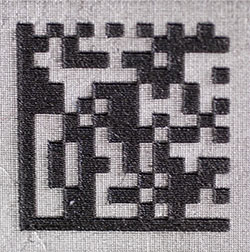
when the beam hits the surface, the fabric absorbs its energy, changing it into heat. whereas the fabric surface reflects most of the beam’s energy, it additionally absorbs and converts a part of that energy into heat. For optical device etching to occur, the fabric should absorb merely enough energy to soften its small surface and build it expand.
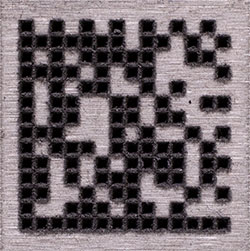
When the beam’s energy is reworked into heat, the temperature of the fabric will increase. At such a high heat, the surface becomes malleable, permitting its form to vary.
Melting
Point of various Metals
Material Melting
purpose
Aluminum 6061 585°C
Aluminum 380 566°C
Carbon Steel 1425—1540°C
Lead 327.5°C
Magnesium 650°C
Stainless Steel Grade 304 1400—1450°C
Stainless Steel Grade 316 1375—1400°C
As the material melts and cools down
inside milliseconds, localized changes occur on the surface. Surface roughness
changes, making permanent markings.
What do changes in roughness look like?
Let’s investigate enlarged pictures taken exploitation AN microscope.
The
clean atomic number 13 before the optical device etching method, viewed
exploitation AN microscope. The surface is very swish. Cells of a knowledge matrix code incised on AN atomic number 13
surface, viewed exploitation AN microscope. a part of the surface shows diffuse
reflections caused by tiny changes in roughness. Another a part of the surface
shows absorption caused by chaotic changes in roughness.
As you'll see, surface roughness is for
good affected. Color changes seem as a results of totally different patterns on
the surface. For high-quality markings, the black and white colors supply the
simplest contrasts.
Of course, the method is optimized for
every application and therefore slightly totally different. If you have got
specific necessities, the simplest thanks to verify however the etching method
works for your application is to raise a optical device knowledgeable.
If you wish to any explore the physics
behind optical device technology, you'll additionally watch free academic
videos created by the university.
What’s the distinction
Between optical device Etching and optical device Engraving?
A data matrix code that was created with
optical device etching, forming a raised mark. a
knowledge matrix code that was created with optical device engraving, forming a
deep mark.
Laser Etching optical device Engraving
Laser etching is quicker, however
optical device engraving is additional sturdy. this is often as a result of
reaching a material’s freezing point (laser etching) needs less energy than
vaporizing it (laser engraving). Deep optical device engraving might even need
many optical device passes and inevitably even longer.
On the opposite hand, the holes mamma
with engraving have a far better protection against abrasion than the elevated
marks fashioned with etching. In fact, the optical device etching elevation
will reach up to eighty microns whereas the optical device engraving depth will
reach five hundred microns.
Laser etching stands out once it
involves making high-contrast markings. Whereas optical device engraving solely
creates black marks, optical device etching will be wont to produce each black
and white marks. For this reason, optical device engraving is typically
employed in combination with optical device etching to form high-contrast
engravings.
Etching is usually higher than engraving
unless you wish high resistance to abrasion. If you continue to can’t decide
that is best for you, we’ve ready a piece of writing to assist you select
between etching and engraving. otherwise you will raise a optical device
knowledgeable.
Watch this video to check each optical
device engraving (dark markings) and optical device etching (pale markings).
Is optical maser Etching
Permanent?
Yes, optical maser etching is permanent.
A optical maser carved mark can stay legible for the half’s helpful life with
higher readability than alternative direct part marking technologies. In fact,
optical maser etching will stand up to non-abrasive treatments as well as
e-coating, powder coating and warmth treating.
But grasp that optical maser etching has
its limitations. Abrasive treatments like shot blasting and sandblasting
generally take away optical maser carved marks. to keep up readability when
abrasive treatments, you wish to mark work pieces with shot blast resistant
optical maser engraving.
What Materials will be
carved with a Laser?
Laser etching could be a versatile
method which will be used with nearly any metal. the subsequent list is
non-exhaustive:
- Aluminum
- Anodized atomic number 13
- Lead
- Magnesium
- Steel
- Steel untainted
- Zinc
For data on marking completely different
materials, contact the optical maser knowledgeable.
What colors will be carved
with a Laser?
Laser etching will generate black, white
and reminder grey. For high-quality markings and half traceability, black and
white offers the simplest distinction. Here’s however optical maser etching
creates those colors:
Diffuse
reflections produce white Absorption
creates black
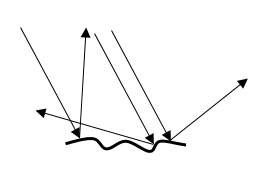
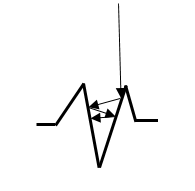
Laser tempering, a unique marking
method, will produce a wider vary of colors on steel and stainless-steel. By modulating
the optical maser parameters, completely different colors will be created, as
shown within the following photos. Examples of colors created with optical
maser tempering, shown on a color matrix. samples
of colored logos created for an illustration at a Solutions event.
How Fast Is optical maser
Etching?
Laser etching is quite doubly as quick
as engraving and tempering, creating it the quickest optical maser marking
method. to extend the etching speed, you'll use systems with higher optical
maser powers. for many marking applications, the most optical maser power
you'll want is 100 watt. Higher power lasers also are out there if required.
A system of equal power will print
quicker than another if it's designed with higher optical elements and has
optimized optical maser parameters. Our LXQ Series could be a typical example
of this. Speed tests have tried that it's the quickest optical maser marker for
metals.
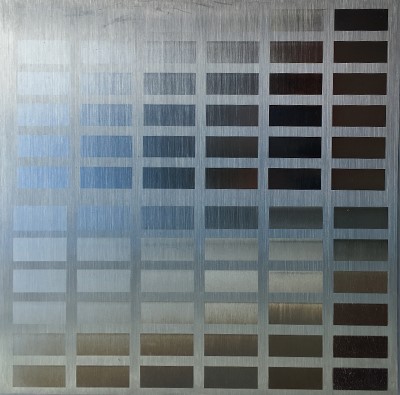
Other than that, the marking speed
additionally depends on the kind of fabric, the scale of the symbol and its
colors (etching white marks is quicker than black marks). the subsequent
resources give you with samples of marking speed:
- Laser Marking Performance for atomic
number 13
- Laser Marking Time Estimate for
Industrial Applications
What sorts of optical
masers will Do Laser Etching?
Only fiber optical masers will be used
for laser etching. this can be as a result of etching could be a method used
with metals, that react higher to fiber lasers. In fact, the optical maser you
wish depends on the kind of fabric you wish to print, not on your marking
method.
But why specifically Does one want fiber
lasers to print metals? Bear with U.S.A., the solution is technical.
Lasers unharness energy by emitting
optical maser beams of specific wavelengths. once the beam hits the surface,
the fabric reflects most of its energy. The remaining energy is absorbed and
regenerate into heat. For optical maser etching, the fabric should absorb only
enough energy to soften.
Now, fiber and greenhouse emission
lasers generate completely different wavelengths, and every material
absorbs/reflects these wavelengths otherwise. to maxmize the energy transfer
from the beam of light to the fabric, you wish the correct wavelength.
As you'll see within the following
graph, metals absorb the fiber laser’s wavelength (1064 nm) additional
expeditiously than the greenhouse emission laser’s (10.6 µm). For this reason,
the fiber optical maser (a style of solid-state laser) could be a better option
once marking metals.
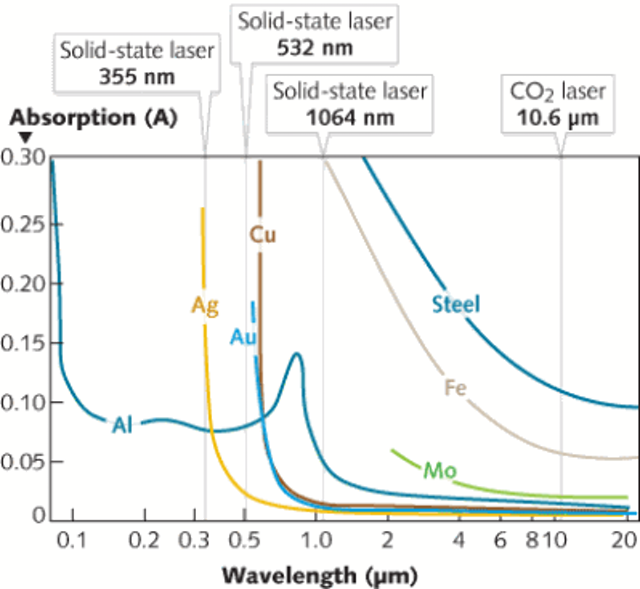
A graph that shows the absorption rate
of metals for a spread of wavelengths. The wavelengths of solid-state lasers
(which embrace fiber lasers) and greenhouse emission lasers also are known
within the graph. a number of the metals whose spectrum is shown embrace atomic
number 13, steel, and iron.
Original work revealed in optical maser
Focus World reprinted courtesy of Endeavor Business Media, LLC.
How Much will a optical
maser Etching Machine Cost?
It’s exhausting to place a value that
covers all solutions for optical maser etching, particularly as a result of the
worth varies plenty from one company to a different. however we are able to
provide you with a plan of the prices concerned.
The optical maser system itself isn't
that pricey, with higher costs for producing applications and lower costs for
fewer serious applications. the worth you pay additionally depends on the
extent of automation you wish.
·
Tabletop lasers, or desktop lasers,
square measure the smallest amount pricey solutions. they're meant for native
stores World Health Organization need to engrave personal things like
jewellery, trophies and guns. as a result of marking isn’t performed in
Associate in Nursing enclosure, sporting optical maser safety specs is needed.
·
Manual workstations square measure
dearer than work surface optical masers as a result of they embrace a Class-1
laser enclosure that keeps the operator 100 percent safe. this sort of optical
maser is good for batch marking.
·
Semi-automated workstations feature a
rotary table that supports the operator, permitting the marking operation to be
performed in hidden time. this sort of digital computer is employed for inline
optical maser marking (the operator should follow the assembly flow). it's additionally
used for batch marking.
Fully automatic optical maser machines
square measure the foremost pricey solutions. they're meant to be integrated in
high-volume production lines that use robots or conveyor systems, like those
found in smelting plants, casting plants, and assembly lines.
What Makes Some Lasers
additional Expensive?
The examples that follow can assist you
perceive the worth gaps between lasers from completely different firms.
·
Some optical maser machines provide no
environmental protection whereas others have informatics ratings, protectively
against dirt, water and alternative contaminants that would break your system
over time.
·
Some optical maser systems square
measure made from low cost optical elements that generate low-quality markings.
alternative lasers use higher quality elements that improve sturdiness, speed,
distinction and exactness.
·
Some lasers square measure fencelike in
plastic casings which will simply break. Others square measure fencelike in
durable gilded frames that stand up to direct shocks and shield the inner
elements.
Before shopping for the optical maser,
you should:
·
Discuss your application with the optical
maser knowledgeable World Health Organization will advise you.
·
Ask however the merchandise is
completely different than the competition’s.
·
Request a sample marking.
How does one Implement
optical maser Etching?
To implement optical maser etching
within and outdoors production lines, Laser offers optical maser marking
machines (for commonplace solutions) and OEM optical maser markers (for custom
solutions with system integrators).
We know that every project has specific
needs. If you have got queries on however optical maser etching is enforced, we
are able to assist you. All you wish to try and do is raise our consultants.

Comments
Post a Comment